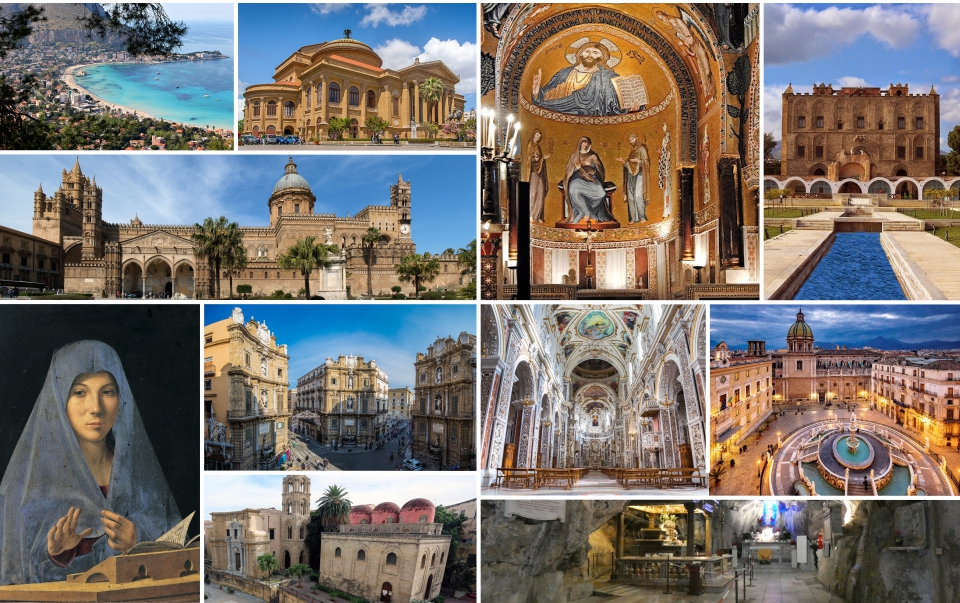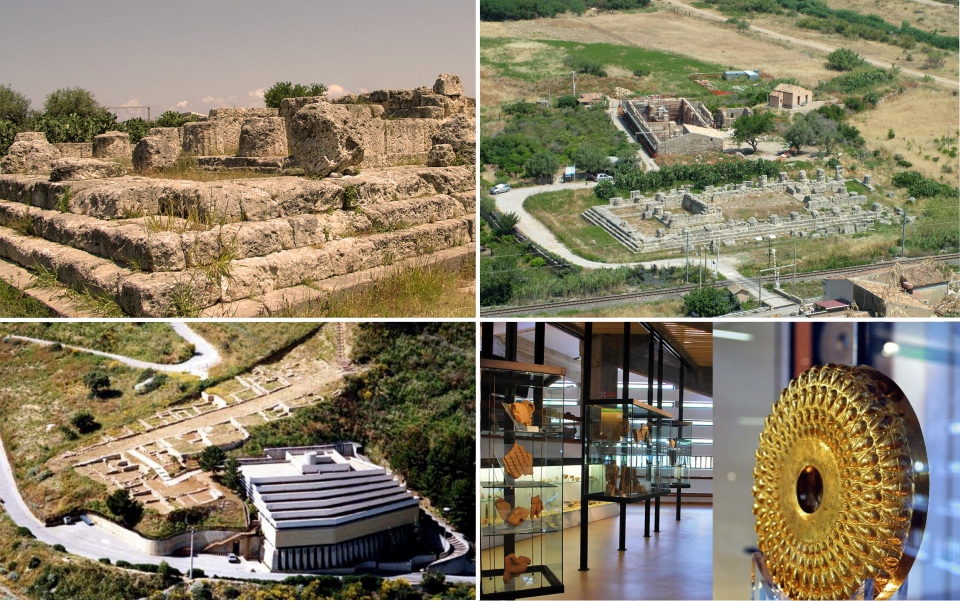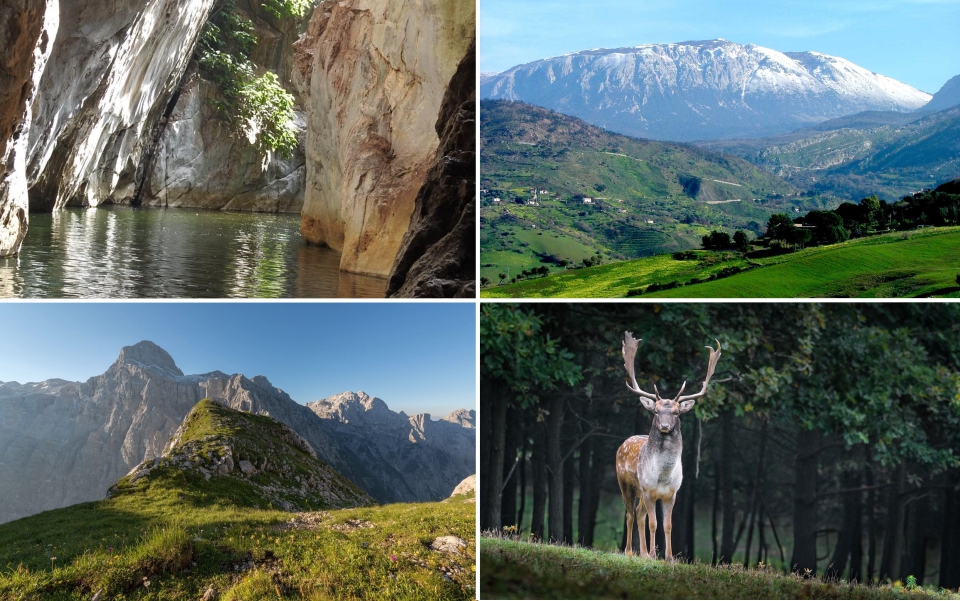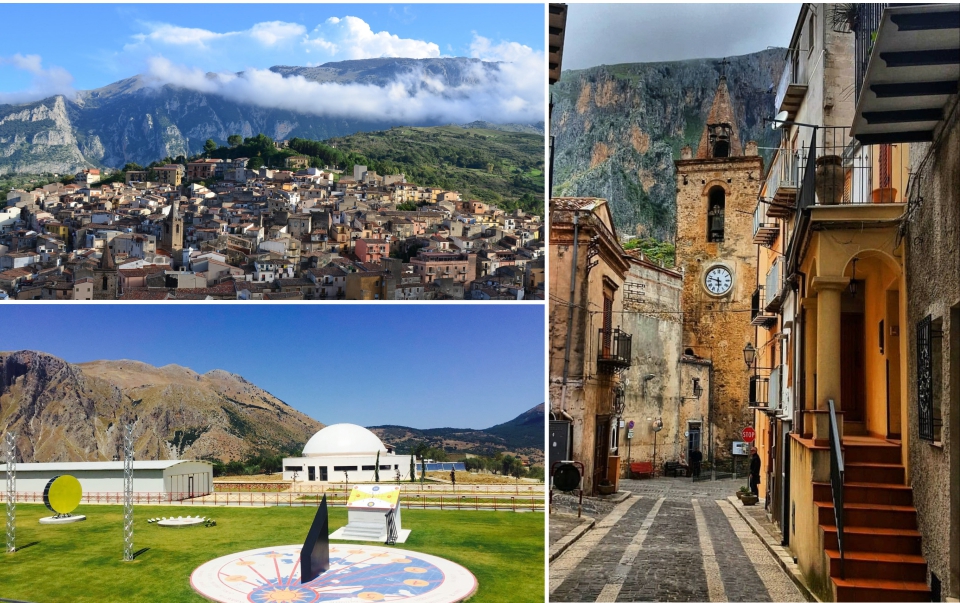
Palermo: A melting pot to discover.
City and port of north-western Sicily, Palermo is the capital of the province of the same name and of the Sicilian Autonomous Region. The city has lived through dozens of dominations, each of which has left, through the construction of precious monuments and buildings, a tangible sign of its passage. Muslims first and Normans later created a combination of art and culture that made Palermo a real architectural jewel with Moorish domes, cloisters and palaces. The Cathedral, dating back to 1184, expresses the synthesis of these two dominations as well as the Norman Palace, seat of emirs, kings and viceroys to which the famous Palatine Chapel is annexed. Remarkable is the Cathedral of Monreale, a Medieval village located in the outskirts of the city, which is characterized by a splendid mosaic cycle as well as by the singular cloister with paired columns. Palermo is well known all over the world for its cuisine and gastronomy represented, among others, by typical sweet dishes such as the famous Sicilian cassata and cannoli rich of ricotta cream and candied fruit.

Cefalù, the pearl of the Mediterranean.
Located in the province of Palermo, the village of Cefalù stands on a promontory of the Tyrrhenian coast only 30 meters above sea level, at the eastern end of the Gulf of Termini Imerese. Active fishing and commercial port, it hosts a popular seaside resort known both in Italy and abroad. Noteworthy are the remains of the ancient walls and a megalithic pre-Hellenic temple called “Diana”, located on the high ground of the fortress that dominates the town. The cathedral, which stands on Piazza del Duomo, was built by the will of King Roger II in 1131 with a mixture of Arab-Norman styles and Byzantine mosaics on a golden background. On Corso Vittorio Emanuele it is possible to visit the “Medieval wash house” characterized by 22 cast-iron mouths arranged along the walls with low vaults.

Sanctuary of Gibilmanna, between faith and nature
Renowned mountain location overlooking the town of Cefalù, it hosts a remarkable sanctuary built in the 17th century, a destination for pilgrimages from all over the world. Located on the foothills of Pizzo Sant’Angelo, it offers an enchanting view of the Tyrrhenian Sea and the Aeolian Islands. Higher up is the observatory of the National Institute of Geophysics.

The Archaeological Park of Imera, the Greek Polis
The vast archaeological area of Imera is located 16 km east of the town of Termini Imerese, on the natural terrace overlooking the Buonfornello plain.
Founded in 648 B.C. by settlers from Zangle (an area near Messina) it hosts a series of temples on the acropolis including the Sanctuary of Victory which is inspired in its architecture by the Athenainon of Syracuse.
It was the home of illustrious and important citizens and was also mentioned by Cicero in his Verrine. After years of prosperity and relative peace, Himera was attacked by the Carthaginians in 480 B.C. and then definitively destroyed in 408 B.C. by Hannibal.
It is also possible to visit the Antiquarium which houses the most significant finds. The tour allows you to immerge yourself in the everyday life, problems and customs of the Greek colony and its territory.

Castelbuono, the jewel of Sicily
The municipality of Castelbuono is located 423 meters above sea level on the northern side of the Madonie Moutain range, at the foot of Pizzo Carbonara. Of Byzantine origins, its urban layout started to develop during the 14th century by the will of the noble Ventimiglia family. Notable example of Baroque art is the new Mother Church, while the old Matrice dates back to the 14th century. The imposing four-sided castle is from the fourteenth century and houses various chapels with Serpottian stuccoes from 1683. 4 km away from the town is located the suggestive hermitage of San Guglielmo, dating back to the fourteenth century.

Madonie Regional Natural Park, one step away from heaven between history, art and nature
The mountain range of the Madonie Park rises close to the northern coast of Sicily between the valleys of the Pollina and Torto rivers. Partly made up of Dolomie, it has numerous karst phenomena and culminates in Pizzo Carbonara at an altitude of 1975 meters above sea level. The Park, in addition to including a rich wooded area, consisting of various specimens of unique flora and also fauna, is dotted with numerous paths that connect shelters and hostels scattered throughout the territory. The two towns of Petralia Soprana and Petralia Sottana are the largest mountain settlement within the park.

Isnello, the Sicilian village straight out of a storybook
The Madonie Regional Natural Park is home to some truly spectacular villages. The magic of these places lies in their geographical location, from which they dominate a spectacular landscape. Isnello is one of these wonderful gems. Located at an altitude of 530 meters above sea level, the town is of medieval origin and originally developed around the Byzantine castle of which only the external perimeter and a few ruins remain today.
The mother church is dedicated to Saint Nicholas and dates back to the fifteenth-century. Inside is the precious marble tabernacle attributed to Domenico Gagini. Also worth visiting are the churches of the Annunziata (13th century) and of the Rosario, annexed in the 16th century to the palace of the Princes of Isnello.
The trip can end with a visit to the largest astronomical park in the Mediterranean area, an important scientific pole directed by the Italian Space Agency. Located on Mount Mufara (1,865m above sea level), the Gal Hassin Astronomical Observatory combines “pure science” with a state-of-the-art research station, with “education”, thanks to the many meetings and exhibitions open to the public and schools.
